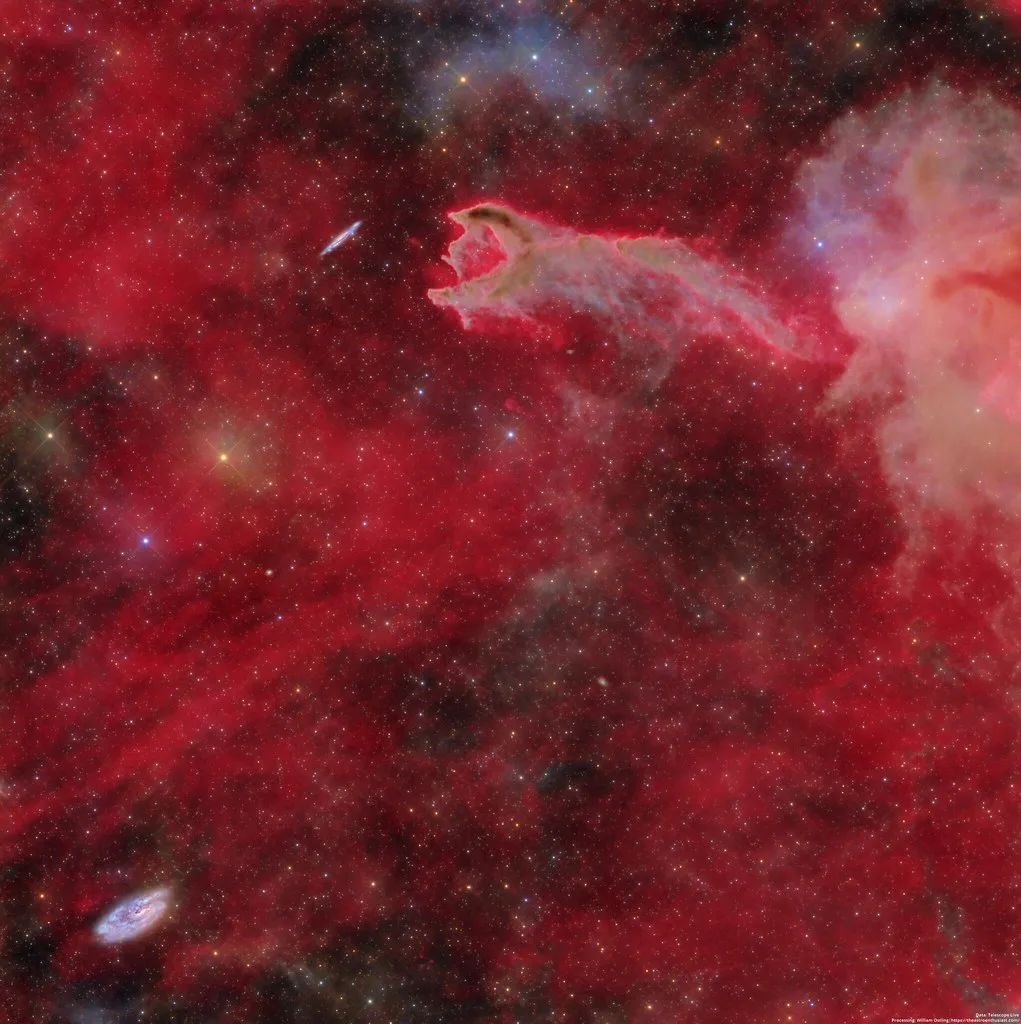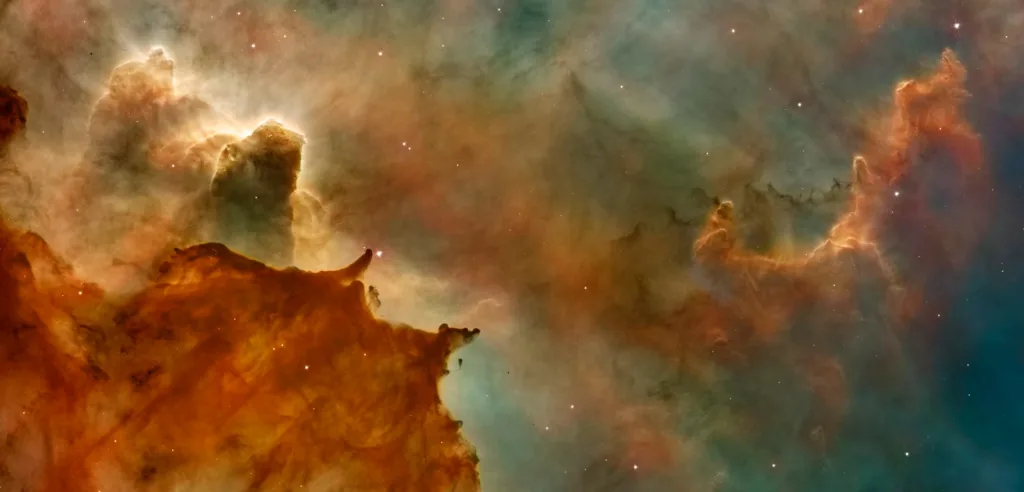Table of Contents
A spectral hand reaching for the stars is seen by astronomers.
Recent images of a far-off nebula have shown what looks to be as spectral hand formed of gas and dust extending across space.
The eerie picture, which was captured in the constellation of Puppis about 1,300 light years from Earth, depicts what appears to be a hand reaching out towards the spiral galaxy ESO 257-19 (PGC 21338).
According to a statement from researchers at the NSF NOIRLab (U.S. National Science Foundation National Optical-Infrared Astronomy Research Laboratory), the dusty structure known as CG 4 is actually something called a cometary globule and is nowhere near the galaxy in the picture that has coincidentally aligned with the hand.

CG 4 is a relatively small Bok globule, measuring around 1.5 light-years in diameter and having a tail that extends 8 light-years. Scientists are still unsure of how cometary globules acquire their peculiar shape; some ideas speculate that they may have started out as nebulas in the shape of spheres that were blasted apart by a nearby supernova. According to some theories, they are created by stellar winds from neighboring massive stars or other objects.
CG 4 is situated in the Gum Nebula, which is home to the Vela Supernova Remnant and Vela Pulsar, along with thirty-one additional cometary globules.
The cometary globules may have taken on their distinct shape due to the supernova or stellar winds from the pulsar, since the tails of all of them are directed away from these intense phenomena.

Capturing this image of CG 4 was made possible by the Department of Energy’s Dark Energy Camera (DECam), which was installed on the Víctor M. Blanco 4-meter Telescope at Cerro Tololo Inter-American Observatory (CTIO) as part of the National Science Foundation. DECam’s power allowed it to detect a faint glow of red hydrogen gas within the globule’s head and rim. There must be big, hot stars inside the clouds since this light can only be produced when hydrogen gas has reached a high enough temperature.

Scientists believe that CG 4 has enough gas to give birth to multiple stars the size of our sun, but the globule’s head is gradually being eroded by the radiation these nascent stars emit.
read also : An engineer at NASA develops a propulsion device that defies physics 2024
Astronomers Spot Ghostly Hand Reaching for the Stars (msn.com)
spectral hand spectral hand spectral hand spectral hand spectral hand

